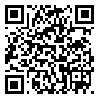Volume 7, Issue 2 (2019)
CLRJ 2019, 7(2): 70-88 |
Back to browse issues page
Download citation:
BibTeX | RIS | EndNote | Medlars | ProCite | Reference Manager | RefWorks
Send citation to:



BibTeX | RIS | EndNote | Medlars | ProCite | Reference Manager | RefWorks
Send citation to:
Zolfaghari H. The Iranian Sources of Hans Christian Andersen's Stories. CLRJ 2019; 7 (2) :70-88
URL: http://clrj.modares.ac.ir/article-12-19212-en.html
URL: http://clrj.modares.ac.ir/article-12-19212-en.html
science Committee , zolfagari_hasan@yahoo.com
Abstract: (5946 Views)
Hans Christian Anderson (1875-1805) is a prominent Danish poet, storyteller and scriptwriter with 160 stories and legends, 800 pieces of poetry and 6 novels. One characteristic of Anderson's writings is his attention to popular literature, verbal and speech language. He most of all affects folk tales. To write these myths, he is inspired more by the legends of the Thousand Words and the legends of other nations of the world. In this article, only four of Iran's sources of Andersen stories are mentioned and their adaptation to Iranian stories. These four stories are: Mandel's fantasy and Emperor's new clothes, Gibreel Jolla and the flying box, Big Claus and Little Claus, Judge and Jail, Tomblinia and Aunt Souske. Previously, it talks about the characteristics and origins of Andersen's stories and the background of the subject. In the narrative of these four stories, from different dimensions to adaptation of narratives are discussed. We find that for a variety of reasons, including the familiarity of Anderson with the Thousandists, through his translation of the word "A" to lunch and interest in the literature of the Orient, he is well acquainted with the Iranian myths and is well versed in it, and for his religious and educational purposes With part of the story.
Article Type: Original Research |
Subject:
The Relationship of Persian Language and Literature with the Language and Literature of European Nations (Impact, Effect and Similarity)
Received: 2018/04/20 | Accepted: 2019/09/11 | Published: 2019/09/11
Received: 2018/04/20 | Accepted: 2019/09/11 | Published: 2019/09/11
Send email to the article author
| Rights and permissions | |
 |
This work is licensed under a Creative Commons Attribution-NonCommercial 4.0 International License. |








